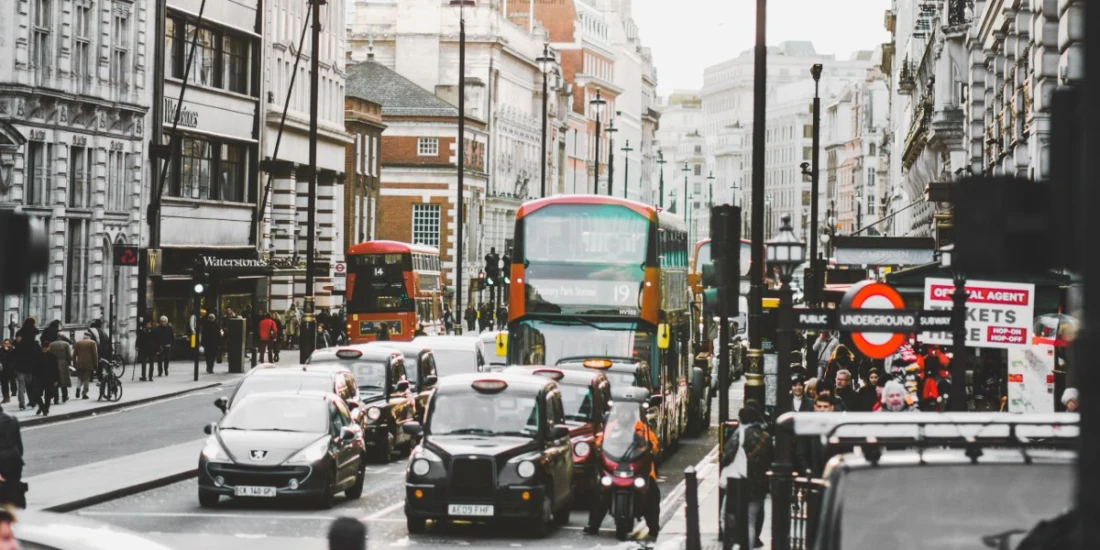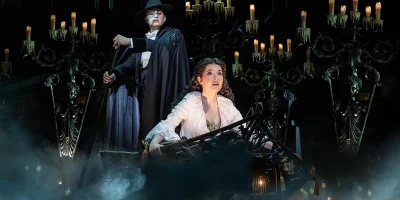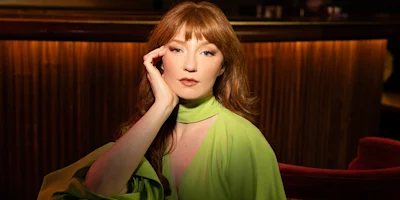
The A-Z of West End theatres you can visit in London
Enjoy a whistlestop tour of the West End courtesy of our guide, as we take you through the A - Z of all things London theatre.
It can be pretty challenging to walk past all the West End theatres in one day. So, imagine you’re on a whistlestop tour of the West End courtesy of our guide, as we take you through the A - Z of all things London theatre.
We’ve listed the 39 London theatres that make up what’s considered to be the West End. But there’s also lots of off-West End venues, with plenty of hidden gems to discover too.
Check out all the London West End and Off-West End theatres.
Adelphi Theatre
Originally named the Sans Pareil Theatre, the venue has since been demolished and rebuilt twice in 1867 and later in 1930, when it was called the Royal Adelphi Theatre. The ‘Royal’ title was dropped in 1940, but audiences regularly flock to the Strand venue, often catching the latest musical.
Aldwych Theatre
Built in 1905 on Aldwych, it was designed in an Edwardian style to reflect the time it was built in. Notable moments in the theatre’s history include a 21-year residency of the Royal Shakespeare Company.
Ambassadors Theatre
With just 444 seats, the Ambassadors is one of the smallest theatres in the West End, housing intimate productions allowing the audience to get closer to the action. Notably, Stomp was at the Ambassadors for 10 years.
Apollo Theatre
Opening its doors in 1901, the Apollo Theatre is one of six theatres on Shaftesbury Avenue. In 2013, the ceiling collapsed during a performance of The Curious Incident of the Dog in the Night-Time.
Apollo Victoria Theatre
With 2384 seats, the Apollo Victoria is one of the largest theatres in the West End. It has been home to grand productions including an 18 year run of Starlight Express, where the theatre was renovated to incorporate a skating rink.
Arts Theatre
At a capacity of 350 seats, the Arts Theatre holds the title as the smallest West End playhouse. At first, it was a members-only club, meaning shows would only be performed to those who had been granted access.
Cambridge Theatre
One of five West End theatres to open in 1930, the Cambridge Theatre was restored in 1987 to build upon the ornate designs inside the venue. The theatre occupies a triangular site on Seven Dials.
Criterion Theatre
Originally built to serve as a concert hall in London, the Criterion opened its doors in 1873 with comedic operas written by leading figures including Gilbert and Sullivan. The Criterion was renovated in the 1980s.
Dominion Theatre
The Dominion stands as one of the largest playhouses with 2069 seats. Shows tend to run for long periods at the Dominion, including We Will Rock You that played for 12 years.
Duchess Theatre
Since its opening in 1929, numerous stars have appeared in West End plays, but has been the home of Mischief Theatre’s The Play That Goes Wrong since 2015.
Duke of York’s Theatre
First known as the Trafalgar Square Theatre, the venue was renamed in 1895 in a nod to King George V.
Fortune Theatre
The Fortune was the first theatre to be built in the capital after World War One, opening in 1924. Even though it has a rich history including members of the armed forces visiting in order to watch live shows during World War Two.
Garrick Theatre
Named after the esteemed British actor David Garrick, many comedic plays have taken place at the venue. An underground river was once discovered under the theatre.
Gielgud Theatre
First opened as the Hicks Theatre in 1906, it was later renamed to the Globe before the final rename of the Gielgud in 1994 to commemorate John Gielgud and avoid confusion with the Shakespearean playhouse.
Gillian Lynne Theatre
Renamed from the New London to the Gillian Lynne in 2018 to memoralise choreographer Gillian Lynne in the West End, the theatre originally opened in 1847 as the Mogul Music Hall.
Harold Pinter Theatre
First named the Comedy Theatre, the name was changed in 2011 to acknowledge the works of Harold Pinter. In 2018, a dedicated Pinter at the Pinter season saw dozens of actors in Pinter revivals.
Her Majesty’s Theatre
There has been a theatre on the site since 1705, however Her Majesty’s opened its doors in 1897. Designed in a style to reflect its predecessors, Her Majesty’s has been home to The Phantom of the Opera, which has played a continuous run since 1986.
London Coliseum
Built as a “people’s palace of entertainment”, the London Coliseum was initially unsuccessful due to its expensive upkeep. But, it’s now home to productions performed by the English National Opera.
London Palladium
The Palladium has gained a reputation for staging televised variety shows including Sunday Night at the London Palladium. Each December, the Palladium is home to Christmassy pantomimes.
Lyceum Theatre
Even though there has been a playhouse on the site since 1834, the building was renovated in 1904, newly opening its doors as the Lyceum. Although it was nearly closed at the start of World War Two, the theatre was rescued in 1951 and turned into a ballroom.
Lyric Theatre
The eldest of six theatres located on Shaftesbury Avenue, the Lyric is full of history with shows being performed at the venue from the late 19th century.
Noël Coward Theatre
The venue was first called the New Theatre and has been renamed twice. From 1973 - 2004, it was called the Albery (1973) but now it’s named after the English playwright Noël Coward.
Novello Theatre
Originally named the Waldorf Theatre, the theatre is now named after Welsh composer Ivor Novello, as he lived in a flat above the theatre for 38 years.
Palace Theatre
The Palace was opened in 1891 as the “Royal English Opera House”, but now it’s home to the original production of Harry Potter and the Cursed Child.
Phoenix Theatre
The theatre opened in 1930 with a performance of Private Lives starring Laurence Olivier. In 1991, the Phoenix was home to Blood Brothers which played for 21 years.
Piccadilly Theatre
The theatre had to be rebuilt in the 1940s after being destroyed in World War Two. In recent years, Broadway transfers regularly found themselves at the theatre including Pretty Woman: The Musical and Moulin Rouge: The Musical.
Playhouse Theatre
Built as the Royal Avenue Theatre in 1882, the theatre had to be rebuilt into the Playhouse Theatre in 1907, however the work killed six people due to part of Charing Cross station collapsing in the wind.
Prince Edward Theatre
Opening in 1930, the theatre was named after Edward VIII, but later became a casino in the mid 1930s. Damaged from World War Two, the building had to be renovated and in 1954, it was eventually reopened as a cinema.
Prince of Wales Theatre
The theatre has stood in London since the nineteenth century, with more seats added in due to the popularity of going to a show. Barbra Streisand even performed at the Prince of Wales, playing the Funny Girl Fanny Brice.
Savoy Theatre
The Savoy was the first theatre to have its lighting powered entirely by electricity. Throughout its history, the theatre has had to be renovated twice, with a grand opening in 1993.
Shaftesbury Theatre
Opening as the Princes Theatre in 1911, the theatre’s name was finally changed to the Shaftesbury in 1962. The building had to be closed again in 1973 after the ceiling fell in.
Sondheim Theatre
Previously named the Queen’s Theatre, the venue was renamed after the American composer Stephen Sondheim in 2019.
St Martin’s Theatre
Opening with a production of the Edwardian comedy Houp La! in 1916, the theatre was built in partnership with the Ambassadors Theatre. The Mousetrap moved to St Martin’s from the Ambassadors in 1974, where it has played ever since.
Theatre Royal Drury Lane
There has been a playhouse on the site since 1663, but the theatre that stands today first opened in 1812. The venue has become heavily associated with musical theatre.
Theatre Royal Haymarket
First built in 1720, it was later rebuilt a century after. It was the final West End playhouse to light its production via candlelight.
Trafalgar Theatre
Originally named the Whitehall Theatre, there have been productions taking place at the site from 1930 including the Whitehall Follies who would perform for the military. In 2003, it was renovated into Trafalgar Studios.
Vaudeville Theatre
First opening in 1870, the building has been redone twice with the current standing in operation since 1926 and was previously the home of Vaudeville-style performances in the West End.
Victoria Palace Theatre
Reconstructed in 1910, recent shows at the theatre include Billy Elliot featuring music by Elton John and is currently home to the American sensation Hamilton.
Wyndham’s Theatre
Named after the commissioner Charles Wyndham, the building sits in the heart of Leicester Square, close by to the station.
Originally published on









